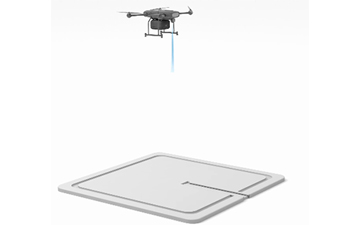
2025-02-19
At Benewake, we are committed to providing cutting-edge technology for various applications, particularly in the realm of unmanned aerial vehicles (UAVs). Our lidar sensor for UAV applications has been engineered to deliver high precision and efficiency while maintaining a lightweight profile. Understanding how sensor weight impacts drones and mobile applications is essential for maximizing their performance and effectiveness.

Lightweight Sensors' Significance in UAV Design
When designing UAVs, weight is a critical factor that influences flight performance. The integration of a lidar sensor for UAV capabilities can significantly enhance navigation, mapping, and obstacle detection. However, if the sensor is too heavy, it can lead to increased energy consumption, reduced flight time, and diminished operational range. At Benewake, we prioritize the development of lightweight lidar sensors specifically designed for UAVs, ensuring that our products do not compromise flight capabilities while still delivering exceptional data quality.
Effects of Sensor Weight on Flight Time and Maneuverability
The weight of a lidar sensor directly affects the flight time and maneuverability of UAVs. Heavier sensors require more power to maintain altitude and stability, which can lead to shorter flight durations. This limitation can hinder the ability to conduct long-range surveys or extended missions. By using our lidar sensor for UAV, operators can enjoy longer flight times and improved agility. Our lightweight design allows drones to navigate complex environments more effectively, making them an ideal choice for applications such as aerial surveying, search and rescue, and environmental monitoring.
Balancing Performance and Payload Capacity
One of the most significant advantages of our lidar sensor for UAV applications is its ability to balance performance with payload capacity. UAVs are often limited in the total weight they can carry, meaning that every component must be optimized for efficiency. Implementing a lidar sensor that is both lightweight and powerful ensures that drones can carry additional equipment or perform multiple tasks without sacrificing capability. At Benewake, our focus is on providing a lidar sensor for UAVs that enhances operational efficiency while allowing for flexibility in payload configurations.
Conclusion
The key to maximizing drone performance is choosing the appropriate lidar sensor for UAV applications. We at Benewake are aware of the significance of sensor weight and how it affects flight duration, maneuverability, and overall efficacy. We enable operators to attain exceptional outcomes in a range of applications, including monitoring and surveying, by providing a lightweight lidar sensor for unmanned aerial vehicles. You can rely on Benewake to offer creative solutions that expand the capabilities of your UAVs so you can fly with assurance and accuracy.